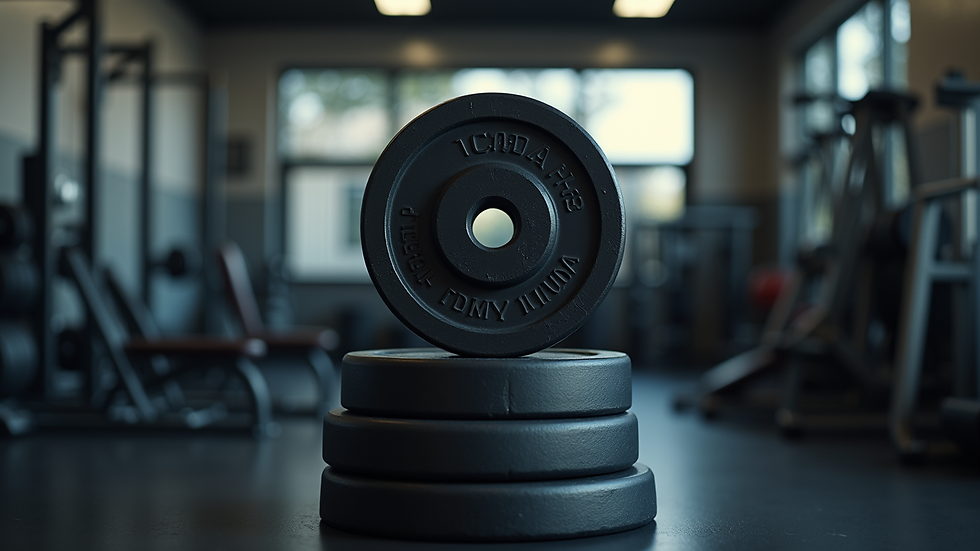Unlocking the Power of Low Reps: The Surprising Science Behind Strength Training
- kelsey6187
- Jul 25
- 3 min read
Strength training is not just about lifting weights; it’s about grasping how our muscles work and how to make the most of our workouts for better results. A key topic in the fitness community is the ideal number of repetitions—or “reps”—to perform during strength exercises.
Most experts recommend capping reps at five for the best strength gains. In this post, we’ll explore the science behind this practice and why it holds true.
The Basics of Strength Training
Strength training involves exercises that work against resistance, whether that's weights, resistance bands, or even your body weight, with the goal of enhancing muscle mass, strength, and overall fitness.
Two main adaptations occur during strength training: neural adaptations and muscular adaptations. Neural adaptations enhance the nervous system's ability to activate muscle fibers effectively. Muscular adaptations lead to physical changes in muscle size and strength.
Low-rep strength training utilizes heavier weights, targeting fast-twitch muscle fibers. These fibers are crucial for building explosive strength and size, making low reps especially useful for anyone aiming to boost overall power.
The Science Behind Low Reps
When you lift heavy weights for low reps—generally under five—you engage various muscle fibers and harness your body's full strength potential.
Research shows that lower reps with heavier weights can lead to significant increases in anabolic hormones like testosterone and growth hormone, essential for muscle growth and recovery. A study by the National Strength and Conditioning Association found that training in the 1-5 rep range can lead to a 20% increase in strength over 12 weeks.
Furthermore, low-rep training enhances force production, a key factor for athletes. It trains your nervous system to swiftly activate fast-twitch fibers, improving overall strength.
Why Under Five Reps?
1. Enhanced Strength Gains
Focusing on low reps increases muscle tension, maximizing potential for growth and strength adaptation. Heavy lifting stimulates myofibrillar hypertrophy—the increase in muscle fiber size—resulting in a larger and stronger physique.
For example, a study published in the Journal of Strength and Conditioning Research found that individuals lifting in the 1-3 rep range improved their squat strength by nearly 25% more than those using higher reps.

2. Improved Form and Technique
Low-rep strength training emphasizes form over endurance, which helps prevent injuries. Lifting heavier weights requires concentration on technique, leading to more effective results.
Every lift in low-rep training becomes a chance to refine your movement patterns. This attention to detail not only enhances muscle growth but also ensures a sustainable training plan over time.
3. Time Efficiency
For many, time is a significant factor in their fitness routines. Low-rep training allows for shorter, yet impactful workouts. Spending less time in the gym does not mean sacrificing results, especially when focusing on heavy lifts.
Athletes, including bodybuilders and powerlifters, often prefer intense, shorter workouts designed to maximize gains efficiently. Shorter sessions can be far more appealing while still delivering substantial results.
The Art of Progressive Overload
The principle of progressive overload is vital to effective strength training. This involves gradually increasing the weight you lift to continuously challenge your muscles.
In low-rep training, incrementally upping the weights is crucial. As your muscles adapt, adding weight ensures ongoing challenges and prevents strength plateaus.
Incorporating Accessory Movements
While low-rep training centers on heavy compound lifts, adding accessory movements with higher reps (like 8-15) can enhance your regimen. This strategy not only increases muscular endurance and isolates smaller muscle groups but also brings balance to your workouts.
For instance, after heavy squats, you might do tricep extensions or lateral raises for multiple sets of 10-15 reps. This combination helps to strengthen supporting muscle groups while taking advantage of low-rep training's benefits.

Conclusion - The Science of Strength Training
Understanding the science behind strength training and the advantages of low-rep workouts can significantly enhance your fitness journey. Emphasizing heavier weights with fewer repetitions not only boosts strength but also improves technique and makes training more efficient.
While low-rep training offers many benefits, always listen to your body and ensure proper recovery. Variety is essential, so mix things up to find what works best for you.
So why not take, or even re-take, the plunge into low-rep training? Give your muscles the challenge they seek and unlock your full strength potential!

With determination and solid knowledge, you are on your way to greatness in strength training. Embrace low reps and witness your strength reach new heights!
.png)


Comments